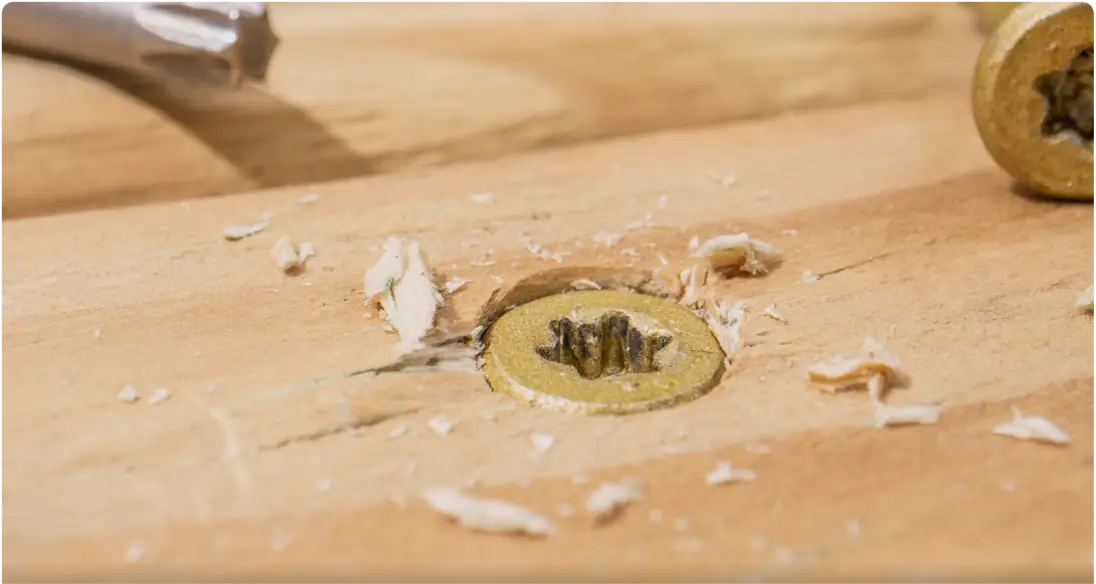Screws vs. Nails

Screws vs. Nails
Does the project call for a screw or a nail? While both are fasteners and often thought to be interchangeable, there are some considerations that need to be accounted for when choosing to use screws or nails.
The primary factor is the amount of stress or pressure that will be placed on the fastener. There are two types of pressure exerted on the fastener and are expressed as the fastener’s ability to withstand the stress as shear strength and tensile strength.
Shear Strength
Shear strength refers to the ability of a fastener to withstand side-to-side pressure, and it is measured in pounds per inch. Nails have the advantage here because they will bend before they snap and since screws are typically constructed of hardened steel, they will snap instead of bend. This is commonly found when attaching OSB sheets to framing members.
Tensile Strength
Tensile strength refers to the fastener’s ability to withstand pressures that pull a structure apart. Stair treads are a good example. When placing weight on the center of the tread, it is pulling the tread from the riser. Nails are more subject to failure as they will loosen over time and work their way out of the two joined pieces. Screws, on the other hand, offer higher resistance due to the threads extra holding power.
Other Factors to Consider
- Whether the project is temporary or permanent
- The materials that are being joined
- The size of the project and how quickly it needs to be built
- Whether the fastener head will be visible
Overall, screws are stronger, have much better holding power, they can be easily removed, and they can set flush or below the surface for concealment. When joining metal to wood or wood to concrete, there isn’t a viable solution with nails.
There are a few reasons why framers use nails, they are driven very quickly with a hammer or pneumatic nail gun, they are less expensive, and once the walls go up, they aren’t seen again.
Screws perform better when installing deck boards, building furniture, and installing cabinets because they provide tighter connections. When installing subflooring, screws are the preferred fastener because they hold tighter and reduce the chance of squeaking. For attaching drywall, screws are the best option. They install fast, provide a secure hold, and eliminate “nail pop”.
Working with hardwood floorboards, nails are the better option because they are thinner, more flexible and allow for better expansion and contraction, they also reduce the chance of splitting the wood, and they don’t mar the surface.
Common Nail Applications:
- Structural framing for walls or roof
- Installing hardwood floors
- Sheathing plywood
- Attaching siding and roofing
- Interior or exterior molding and trim works
- Installing of baseboard or chair rail
Common Screw Applications:
- Installing drywall
- Attaching ledger boards
- Installing cabinets
- Wood and composite decking
- Temporary structures
- Metal roofing
- Fencing
- Joining multiple materials
- Concrete & masonry
- Anchoring furring strips to cement
- HVAC